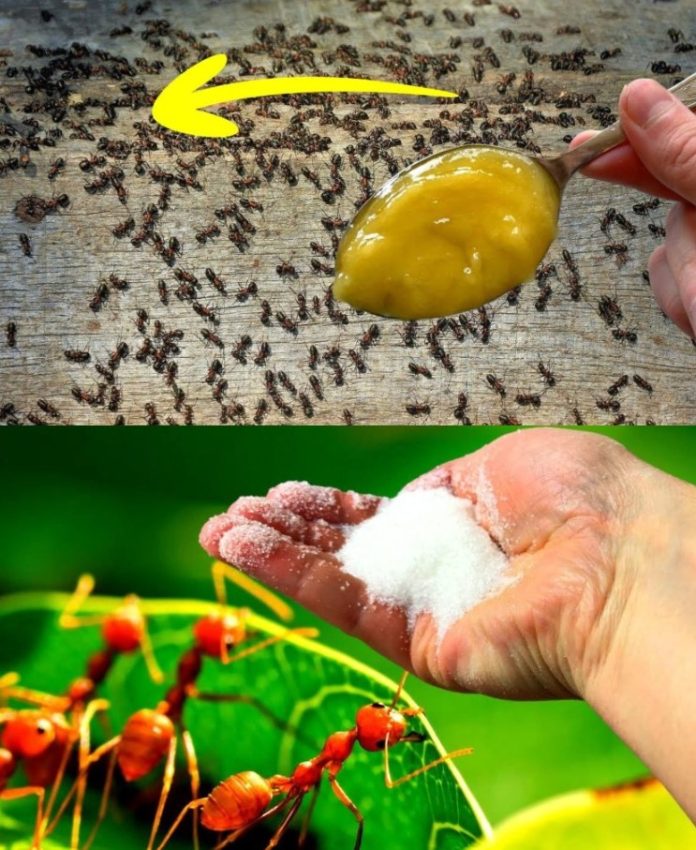Ants are notorious for their ability to invade gardens and disrupt the delicate balance of outdoor spaces. Whether they’re carrying away food scraps, nesting in the soil, or simply marching in a line across your lawn, their presence can be more than just an annoyance. Finding an effective, natural method to control and eliminate ants is crucial for preserving the health of your garden and the fruits of your labor.
While no method is completely foolproof, there are several strategies you can employ to manage ant infestations swiftly and naturally. In this article, we’ll explore a practical, homemade solution that not only addresses the ant problem but also provides a cost-effective and environmentally friendly approach.
The Challenge of Ant Infestations
Ants are more than just minor garden pests. They have the potential to cause significant damage by disrupting plant growth, undermining soil health, and even affecting entire crops. Their colonies can become extensive, and their ability to establish new nests quickly can make an infestation seem overwhelming. Moreover, ants can also bring aphids to your plants, which further damages your garden by feeding on the plant’s sap.
Given the potential for extensive damage, finding an effective method to manage and eradicate ants is essential. While many commercial solutions exist, they can be expensive and may not always align with environmentally friendly practices. Fortunately, natural remedies can provide a viable alternative that is both effective and affordable.
A Natural, Cost-Effective Solution
One of the most effective and natural ways to address an ant infestation involves creating a simple homemade trap. This approach is not only cost-effective but also minimizes the use of harsh chemicals. Here’s how you can create your own ant trap using easily available ingredients:
- Gather Ingredients: You will need maize flour, yeast, and a few other common kitchen items like cinnamon or turmeric. These ingredients are known for their ant-repellent properties and can be combined to create an effective bait.
- Prepare the Trap: Mix maize flour with a small amount of yeast. The maize flour acts as the main attractant, while the yeast works to disrupt the ants’ digestive systems. Adding a sprinkle of cinnamon or turmeric enhances the effectiveness by adding extra repellent properties.
- Application: Place the mixture around the affected areas of your garden. The ants will be drawn to the bait and carry it back to their nests. Once ingested, the yeast and other components interfere with their ability to digest food, leading to the gradual elimination of the colony.
- Monitor and Reapply: Observe the area for signs of reduced ant activity. Depending on the severity of the infestation, you may need to reapply the mixture to ensure complete eradication.
Why This Method Works
The natural ingredients used in this trap have specific properties that make them effective against ants. Maize flour serves as an attractive bait, drawing ants to the area. Yeast disrupts the digestive processes of ants, effectively reducing their numbers. Cinnamon and turmeric add additional layers of deterrence, making the area less inviting for ants.
This method offers a dual benefit: it reduces the reliance on commercial pesticides, which can be costly and potentially harmful to the environment. Moreover, it provides an easy-to-use solution that requires minimal effort and resources.
Preventive Measures
While the homemade trap is effective, prevention is always better than cure. Here are some steps you can take to prevent ant colonies from forming in the first place:
- Maintain Cleanliness: Regularly clean your garden and remove any food sources that might attract ants. This includes picking up fallen fruit, securing trash bins, and avoiding leaving pet food outside.
- Seal Entry Points: Ensure that any cracks or gaps in garden structures are sealed to prevent ants from establishing nests near your plants.
- Use Repellent Plants: Certain plants, such as mint, rosemary, and tansy, are known to repel ants. Planting these around your garden can act as a natural deterrent.
Addressing Large Infestations
For larger infestations or severe ant problems, the maize flour method may need to be supplemented with other strategies. In cases where ants are heavily impacting your garden or orchard, consider using additional natural repellents or traps to manage the situation more effectively.
Conclusion :
Dealing with garden ants can be a challenging task, but utilizing natural remedies provides an effective and environmentally friendly approach to managing infestations. The homemade trap using maize flour and yeast offers a practical solution that is both cost-effective and easy to implement. While no method is entirely foolproof, combining this approach with preventive measures can help you maintain a healthy garden and minimize the impact of these persistent pests. By taking proactive steps and using natural solutions, you can protect your garden from ant invasions and ensure your hard work remains fruitful and rewarding.
Source of the picture : Barbara O’Neill Lectures










